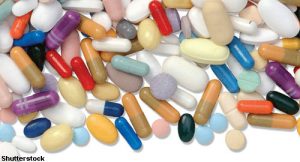 In late January, the U.S. Food & Drug Administration (FDA) approved risankizumab-rzaa (Skyrizi) to treat adults with active psoriatic arthritis (PsA). This approval was supported by results from two clinical trials, KEEPsAKE-1 and KEEPsAKE-2.1
In late January, the U.S. Food & Drug Administration (FDA) approved risankizumab-rzaa (Skyrizi) to treat adults with active psoriatic arthritis (PsA). This approval was supported by results from two clinical trials, KEEPsAKE-1 and KEEPsAKE-2.1
Both KEEPsAKE-1 (NCT03675308) and KEEPsAKE-2 (NCT03671148) are phase 3, placebo-controlled, efficacy and safety studies. Both studies also have a multicenter, randomized and double-blind design.2,3
KEEPsAKE-1 evaluated risankizumab-rzaa in adults who had an inadequate response or intolerance to at least one conventional synthetic disease-modifying anti-rheumatic drug (csDMARD), including leflunomide, sulfasalazine, apremilast or methotrexate.
KEEPsAKE-2 evaluated risankizumab-rzaa in adults who had an inadequate response or intolerance to biologic therapy and/or csDMARDs, such as methotrexate, sulfasalazine, leflunomide, apremilast, bucillamine, iguratimod or cyclosporine. (Note: Bucillamine and iguratimod are not FDA approved or available in the U.S.)
Patients in both trials were randomized to receive 150 mg of risankizumab-rzaa or placebo at weeks 0, 4 and 16, during the 24-week treatment period. The studies’ primary end point was the achievement of an ACR20 response at week 24. Also at week 24, some of the ranked secondary end points included a change from baseline in Health Assessment Questionnaire-Disability Index (HAQ-DI) and achievement of the Psoriasis Area and Severity Index (PASI) 90 response.
Results
In KEEPsAKE-1, 964 patients with active PsA were randomized in a 1:1 ratio to receive either risankizumab or placebo.2 At week 24, 57.3% of patients who received risankizumab-rzaa achieved the primary end point compared with 33.5% of patients who received placebo. This result was statistically significant (P<0.001). Significant differences were also found between patients who received risankizumab-rzaa and those who received placebo for the first eight ranked secondary end points, including skin and nail psoriasis, minimal disease activity and resolution of enthesitis and dactylitis (P<0.001).
At week 24, the ACR50 and ACR70 responses for patients who received risankizumab-rzaa were significantly improved compared with patients who received placebo. The percentage of patients treated with risankizumab-rzaa who achieved an ACR50 response was 33.4% compared with 11.3% of patients treated with placebo (P<0.001). The ACR70 response rates were 15.3% for the risankizumab-rzaa group and 4.7% for the placebo group (P<0.001).
Adverse events and serious adverse events were similar in both treatment groups. One death due to urosepsis was reported in a patient who received risankizumab-rzaa, but was deemed unrelated to the study drug.
In KEEPsAKE-2, 444 patients were randomized to receive risankizumab-rzaa (n=224) or placebo (n=220).3 Of these patients, 206 (46.5%) had previously had an inadequate response or intolerance to biologic agents. Secondary end points assessed key domains of PsA and patient-reported outcomes. Some of these included HAQ-DI PASI 90, proportion of patients achieving an ACR 20 at week 16, proportion of patients who achieved minimal disease activity (MDA) and change from baseline in 36-item Short Form Health Service Physical Component Summary (SF-36) score.

